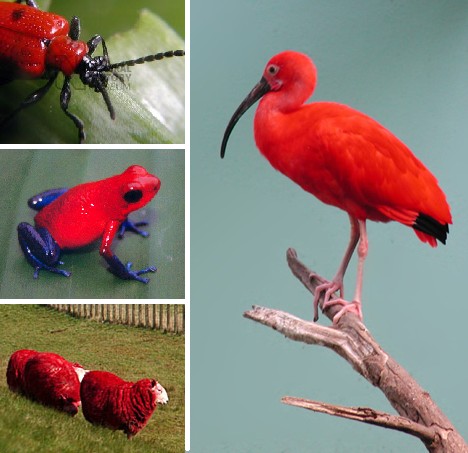
Red animals are rarely retiring – their brilliant crimson, scarlet and vermillion hues dare others to notice them and, often as not, remind them to keep their distance. These 10 colorful examples of red animals do indeed attract our attention and, due to their beauty, make it hard for us humans to stay too far away.
Red Bugs
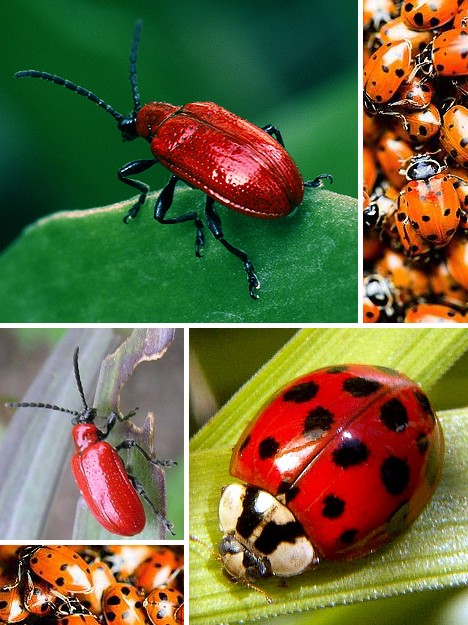
Ladybugs (also called Ladybird beetles) and Lily Beetles are the most common red insects, though Ladybugs are usually spotted to some degree while Lily Beetles are not. Contrary to rumor, red beetles are NOT ground into cochineal dye – this brilliant red dye was discovered by the Aztecs and comes from a dull grayish scale insect that lives on prickly pear cacti.
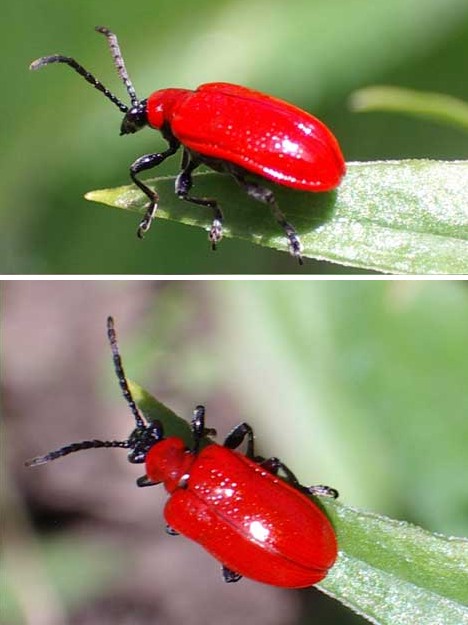
The Scarlet Lily Beetle (Lilioceris lilii) is only 5 mm or 1/5 of an inch long but really stands out thanks to the bright crimson hue of its exoskeleton. Beautiful as they are, Lily Beetles are the bane of gardeners who dread seeing an infestation of them on their lily plants.
![]()
Red Spiders
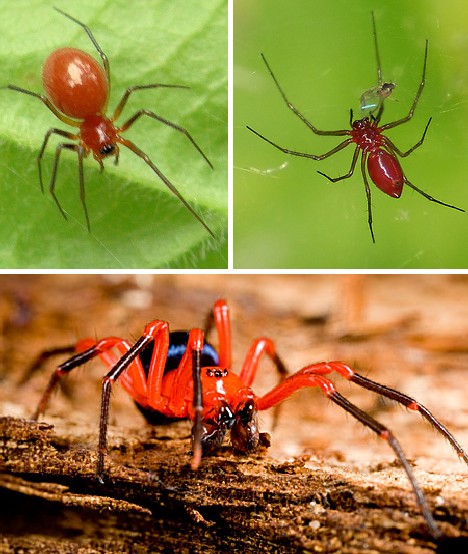 (images via: BugGuide, SouthernBelladonna and Belmont16Footers)
(images via: BugGuide, SouthernBelladonna and Belmont16Footers)
There aren’t all that many red spiders, possibly because they are for the most part ambush predators who need to remain unseen until it’s to late for their prey to escape. Even so, red spiders exist and their devilish hue makes them look, if anything, even more creepy.
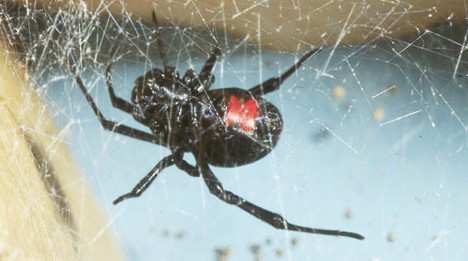
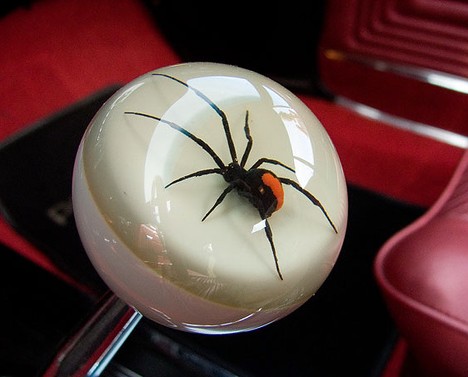 (images via: Surebaby and Luns_Spluctrum)
(images via: Surebaby and Luns_Spluctrum)
Though only part of it is red, the infamous Black Widow Spider warns us of its potentially fatal bite by showing off the eerie red hourglass marking on its back. It shares this trait with the equally fearsome Redback and Funnel Web spiders of Australia, which is nice… until one gets bitten.
![]()
Red Sea Stars
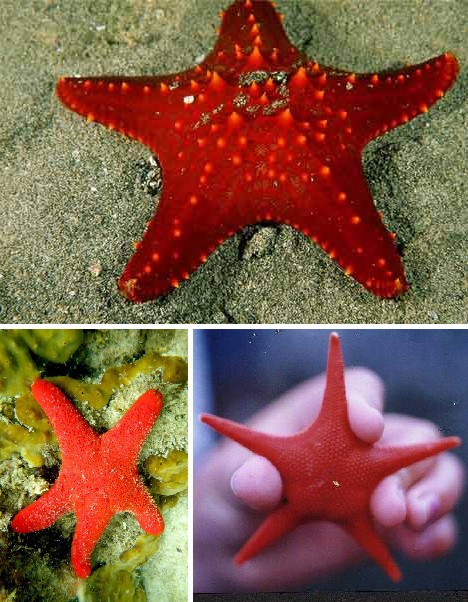 (images via: English Cari, Chaitt and King County)
(images via: English Cari, Chaitt and King County)
Scientists would prefer we forget the name “Starfish” and refer to these marine echinoderms as Sea Stars, as they are not fish. They also don’t always have just 5 arms (though that does seem to be the minimum number) and can have as many as 40! As for color, well, pretty much anything goes. Red looks good on Starf, er, Sea Stars as it helps divers distinguish them among the other colorful sea creatures inhabiting the world’s coral reefs.
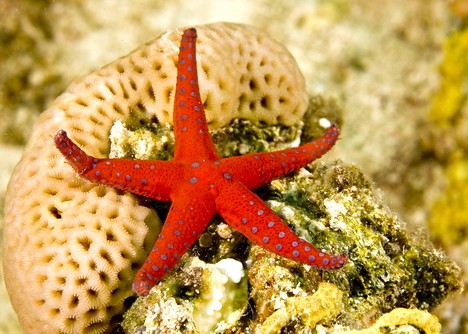 (image via: Egypt Tour Info)
(image via: Egypt Tour Info)
Sea Stars are odd animals, at least compared to humans. Anatomically, they have neither blood nor brains. They have the ability to regenerate lost arms and can live up to 35 years in the wild.
![]()
Red Humboldt Squid
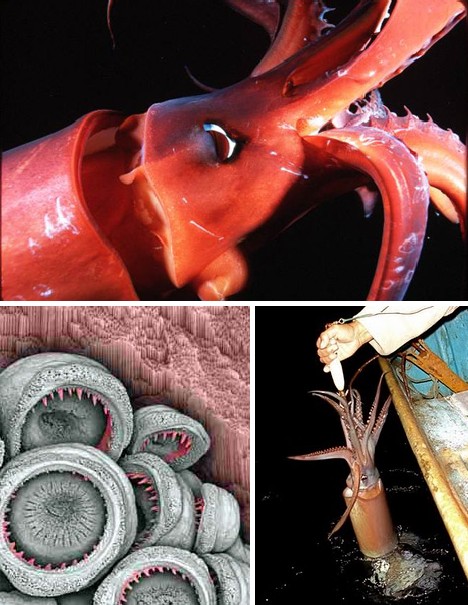 (images via: Sign On San Diego, Internet Pets, Underwater Times and Centrifugaldeforest)
(images via: Sign On San Diego, Internet Pets, Underwater Times and Centrifugaldeforest)
These large cephalopods are known colloquially as “Red Devils”, both for their fire-engine red coloration and their feisty attitude… they’ve been known to attack divers and sometimes try to rip off their masks! This is no small matter as the creatures can grow up to 7 feet long, and typically rip their prey apart using their parrot-like beak and suckers on their arms lined with needle-sharp teeth.
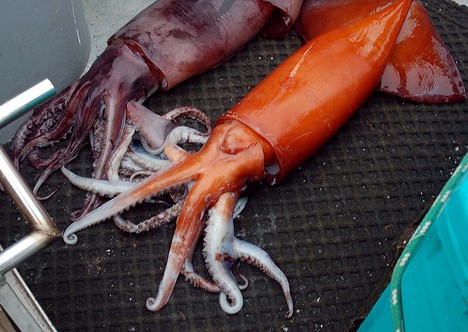 (image via: Michael Caruso)
(image via: Michael Caruso)
If you though Sea Stars were strange, get a load of the Humboldt Squid: 3 hearts, blue blood based on copper instead of iron, and a unique method of communication using bioluminescent photophores in their skin.
![]()
Red Fish
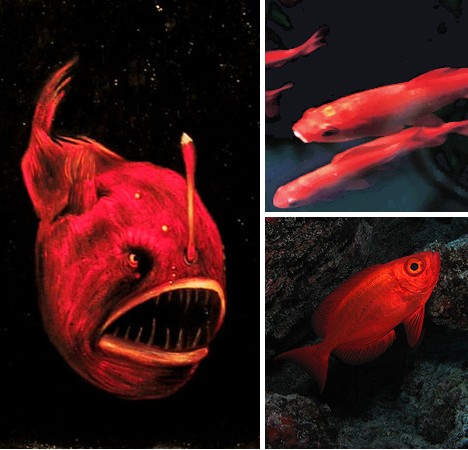
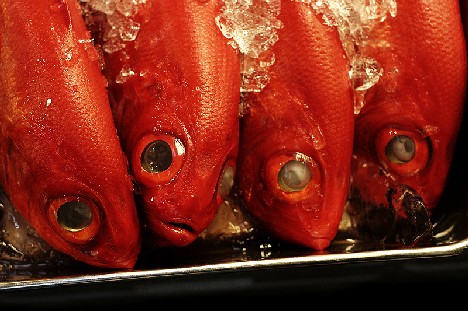
(images via: Sheim.com, ScienceBlogs and MissBimbo)
One fish, two fish, red fish… Angler Fish! The hellish deep-sea denizen above is one of several benthic species that are tinged red. Shallow-water fish also display bright red color that really stands out, even in sunlight filtered through pale blue-green seawater. It’s recently been noted that a variety of fish emit red fluorescent light, ostensibly to ease recognition from other members of their species.
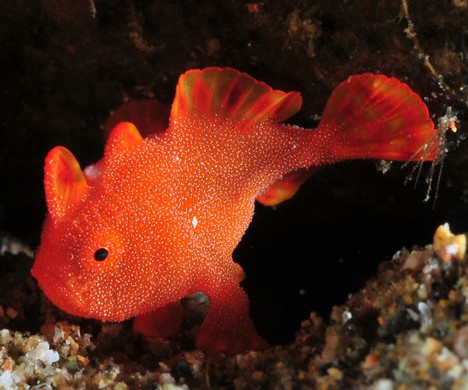 (image via: UW PhotographyGuide)
(image via: UW PhotographyGuide)
The Frogfish has been called the ocean’s ugliest fish, but this small vermillion juvenile doesn’t look all that bad. They’re also famed for their strange method of navigating the seafloor, an activity akin to walking. Here’s a video of a hairy frogfish and his pal out for a stroll, expertly filmed on location in Indonesia by Daan van Wijk:
Walking Frogfish, via Daan van Wijk
![]()
Red-spotted Newts
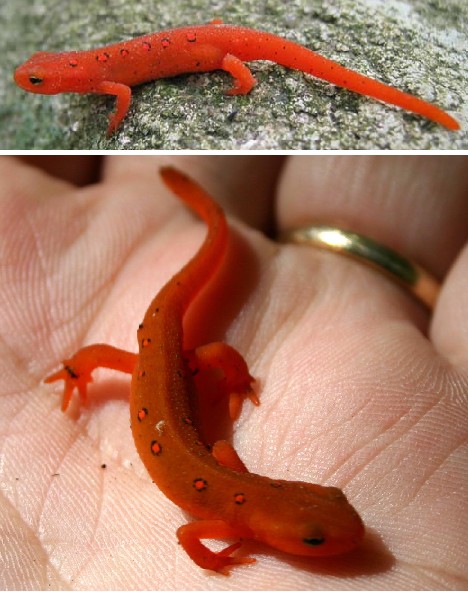 (images via: LiveScience)
(images via: LiveScience)
The Red-spotted Newt is commonly found in wet forested areas of eastern North America, though only one life stage of the amphibian is actually red: the terrestrial “red eft”. Both the gilled larval stage and the air-breathing (though water-dwelling) adult stages of this curious creature are mainly a dull greenish brown in color.
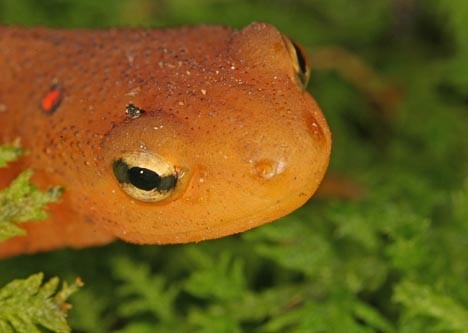 (image via: Marietta.edu)
(image via: Marietta.edu)
Red-spotted Newts are small animals growing up to just 5 inches in length, but they are surprisingly long-lived: up to 15 years! A fun fact about these salamander-like amphibians is that their skin secretes a noxious substance when they are attacked or otherwise threatened.
![]()
Red Poison Dart Frogs
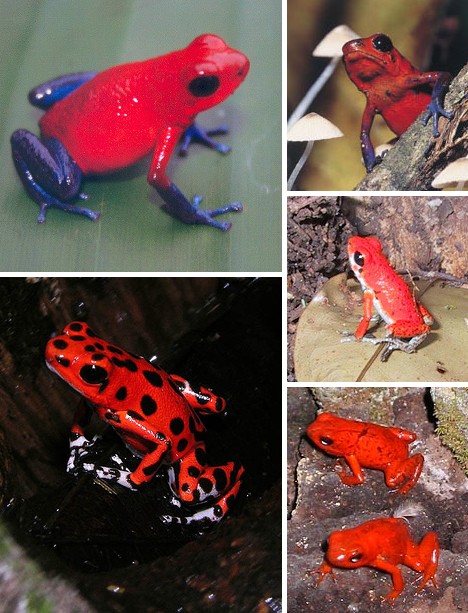 (images via: SC Guide, Mike Bastin and Artur_A)
(images via: SC Guide, Mike Bastin and Artur_A)
A host of very small tropical tree frogs, known collectively as “poison dart frogs”, are brilliant red in color, in whole or in part. Like their brightly colored cousins of other hues, red poison dart frogs are small but they pack a powerful punch to those who would try and mess with them. Early human inhabitants of the rainforest learned this lesson the hard way but were then able to benefit by applying the poison to the tips of their arrows, spears and blowgun darts.
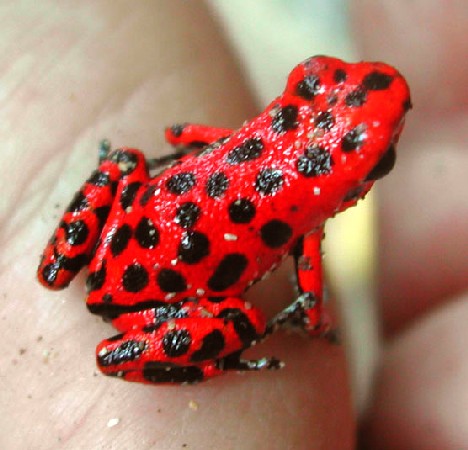 (image via: Trescott)
(image via: Trescott)
The Red Frog Beach project in Bocas Del Toro, Panama, seems to have adopted the spotted red poison dart frog above as its mascot, of sorts. The project, at present undr construction, is to be a world class eco-tourism destination featuring resort-style amenities and a marina, all on the Caribbean island of Bastimentos. Let’s hope the native red frogs, who were there first, won’t suffer any negative impact from the resort and its future guests.
![]()
Red Snakes
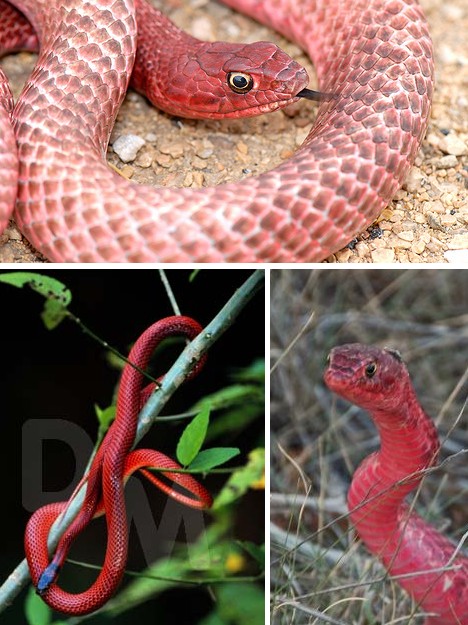 (images via: RDodson, DotPhoto and Wild Adventures)
(images via: RDodson, DotPhoto and Wild Adventures)
There are a number of snakes that are red to some degree, though only a few are red enough to have the color incorporated into their name. Some examples include the Red Coachwhip, Red Racer and English Red snakes, as seen clockwise from above top.
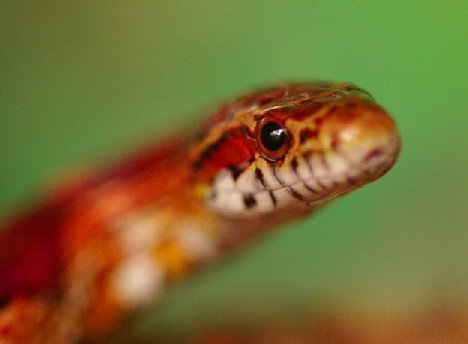
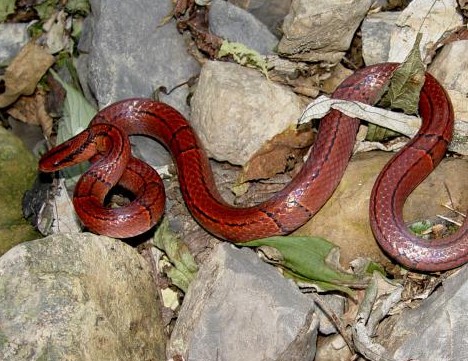 (images via: Al Wab and Ben Yang)
(images via: Al Wab and Ben Yang)
Red snakes like the Corn Snake are common in the continental United States and make popular pets. One color variation breeders have managed to propagate is the Blood Red type, in which the naturally red areas of the snake are exaggerated in relation to the other colors. Below the Blood Red Corn Snake at above top is a Red Bamboo Snake.
![]()
Scarlet Ibis
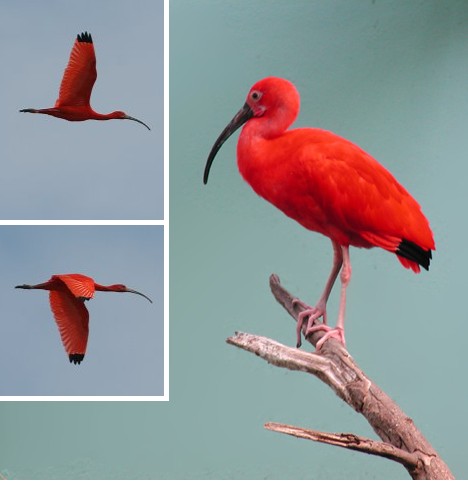
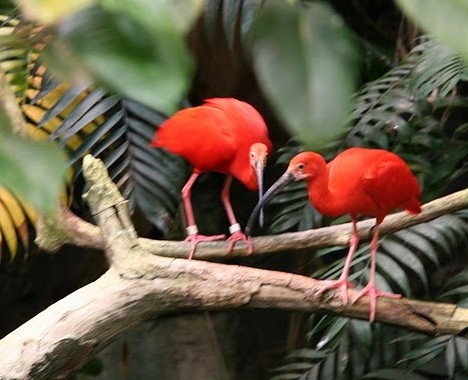 (images via: The Gaber, Ricardo Vandijk and Jardins)
(images via: The Gaber, Ricardo Vandijk and Jardins)
The strikingly colored Scarlet Ibis inhabits the islands and southern shores of the Caribbean Sea, and inland regions of tropical South America. Except for their downwardly curved beaks and the black tips of their wings, these relatively large, tree-nesting birds are typically bright red from head to toe.
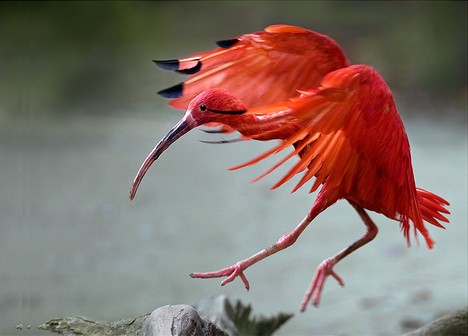 (image via: Guenter Leitenbauer)
(image via: Guenter Leitenbauer)
Surprisingly, the Scarlet Ibis is not born red and if deprived of its favored food – red crabs – it will remain gray and white as it matures. In its natural habitat, the birds metabolize the red pigment from the crabs they eat and incorporate the pigment into their feathers.
![]()
Red Sheep
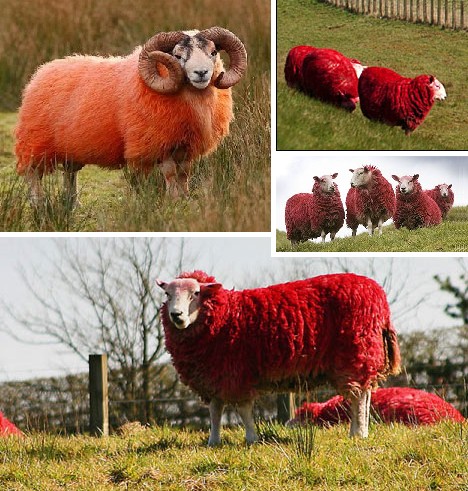 (images via: BBC and Dark Roasted Blend)
(images via: BBC and Dark Roasted Blend)
“Ahh-OOH, red sheep of Scotland…” Drivers along the M8 highway near Edinburgh, West Lothian, have enough to worry about without the added distraction of seeing a flock of crimson sheep grazing the hills alongside the roadway. Let’s just hope they don’t start counting them while driving by – there are 54, to save everyone the trouble.
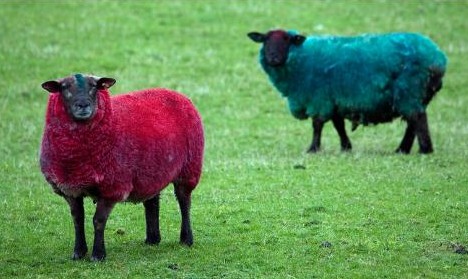 (image via: Too Hot Pics)
(image via: Too Hot Pics)
Why spray-paint sheep red? “They are causing quite a stir with passers-by,” according to farmer Andrew Jack, who further explained “It is a bit of fun and it does brighten things up.” Aye, so it do!
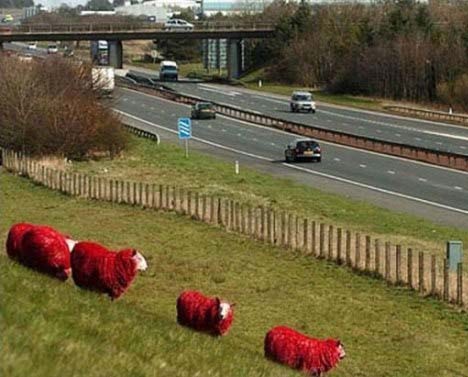 (image via: Ecorazzi)
(image via: Ecorazzi)
Said Craig Chalmers of nearby Pyramids Business Park in response to questions raised about the safety of tinting sheep, “The dyes are obviously animal friendly and we are now considering replacing them with pink sheep when these ones have their coats sheared.” Dunno about you, but we think this is a really baa-d move.
![]()
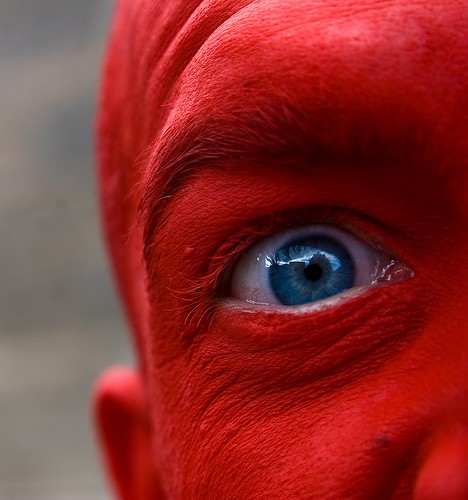 (image via: Inutopia)
(image via: Inutopia)
Seeing red yet? If so, you could be this guy – a one-man crimson tide last seen at the 2007 Edinburgh Fringe Festival. The so-called Red Man isn’t just one of a kind… he’s one in vermillion.







